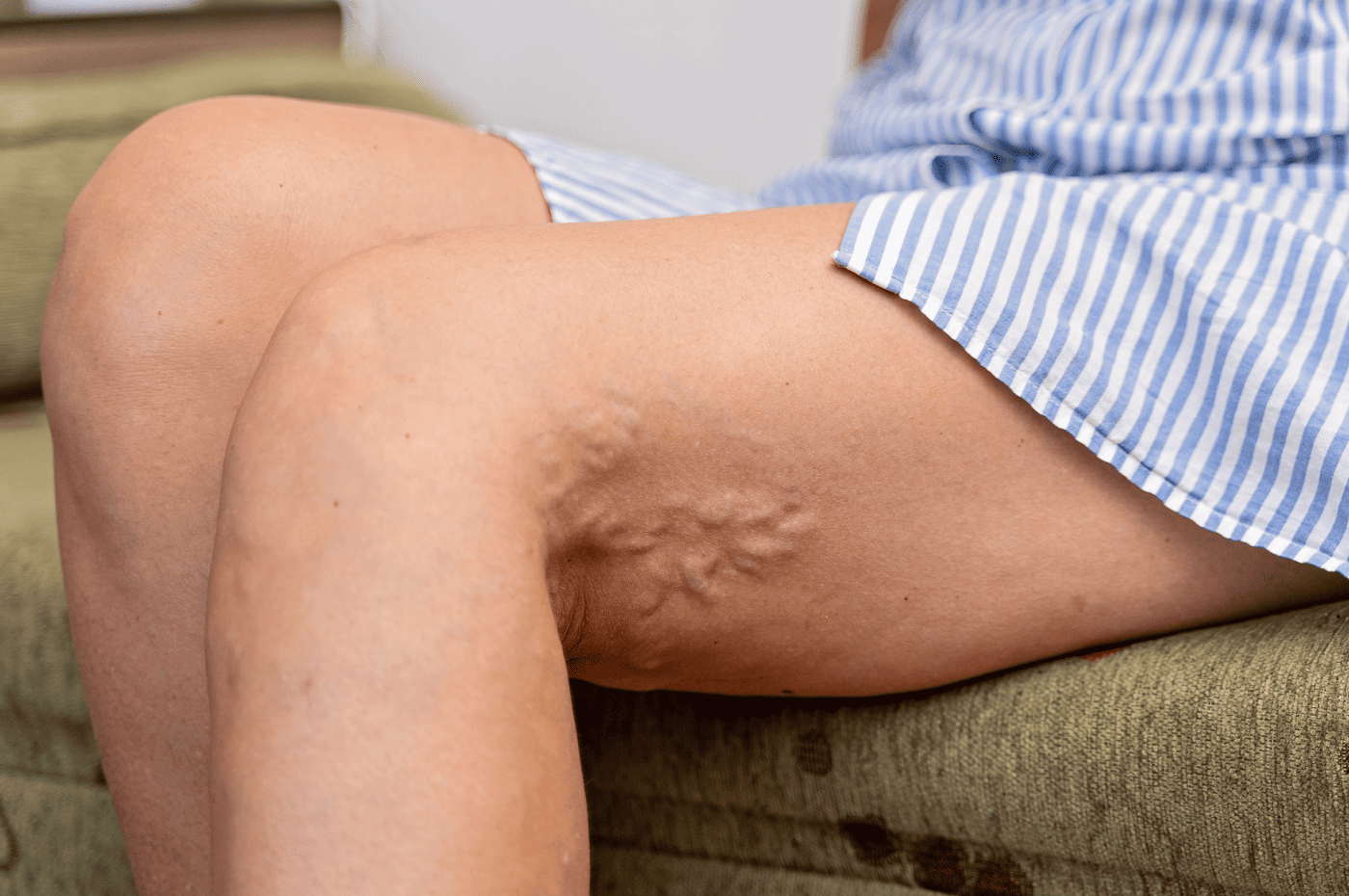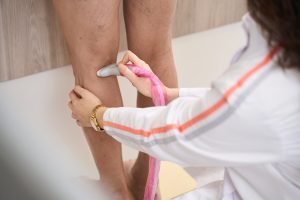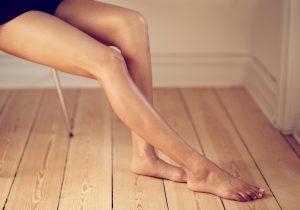We know how varicose veins can not only affect the way your legs look but also bring discomfort like swelling, pain, and that heavy feeling. If this sounds all too familiar, know that you’re not alone, and there’s a solution that could bring you lasting relief. Varithena is a minimally invasive treatment that targets varicose veins to improve both the appearance of your legs and your overall
vein health. If you’re wondering whether Varithena might be right for you, the first step is to schedule a consultation with our compassionate experts at Vein- ity. Don’t wait—reach out to us today, and let’s explore the best treatment for your needs!
If you’re struggling with the discomfort and frustration of varicose veins, you’re not alone. We understand how these veins can cause pain, swelling, and even affect your confidence. The good news is that there are effective, minimally invasive treatments like Varithena that can offer relief. But how do you know if Varithena is the right solution for you? In this guide, we’ll walk you through the key factors that help determine if you’re a good candidate for this FDA-approved procedure. Whether you’re looking for cosmetic improvement or seeking relief from leg discomfort, we’ll help you understand what to consider when deciding if Varithena is the right choice for your vein health. We’re here to help you take the first step toward feeling better.
What is Varithena?
Varithena is an FDA-approved, minimally invasive treatment designed to treat varicose veins. The procedure involves the injection of a specially formulated foam solution directly into the affected vein, which then seals off the vein, redirecting blood flow to healthier veins. This process not only eliminates the visible varicose veins but also helps improve circulation, reducing symptoms such as swelling and discomfort.
The procedure is typically performed in an outpatient setting, and because it’s minimally invasive, it requires no incisions or general anesthesia. Most patients can resume their normal activities shortly after treatment, making it an appealing option for those who want to address varicose veins without downtime.
Why Varithena is Gaining Popularity
Varithena has quickly become a popular treatment for varicose veins for several reasons:
- Non-Surgical: Varithena offers a non-surgical alternative to more invasive vein procedures like vein stripping. There’s no need for cuts or stitches, making it a safer, less invasive option for many people.
- Quick and Convenient: The procedure usually takes less than an hour, and you can return to normal activities immediately after the session.
- Effective Results: Varithena is proven to reduce the appearance of varicose veins and alleviate associated symptoms like leg pain, swelling, and heaviness.
- Minimal Downtime: Most patients experience only mild discomfort or swelling post-treatment, and recovery time is minimal.
How Does Varithena Work?
Here’s a step-by-step breakdown of the Varithena treatment process:
- Consultation: Your journey with Varithena begins with a consultation. During this appointment, your vein specialist will assess your veins, review your medical history, and discuss your symptoms to determine whether Varithena is the best option for you. They may perform an ultrasound to assess the size and condition of the veins to ensure they are treatable with this method.
- The Procedure: Varithena is a relatively quick procedure that typically lasts 30 to 45 minutes. The vein specialist will inject the foam solution into the affected vein using a fine needle. The foam causes the vein to collapse, sealing it off and rerouting blood to healthier veins. You may feel a slight sensation during the injection, but most patients experience only mild discomfort.
- Post-Procedure Care: After the treatment, you may be asked to wear compression stockings for a few days to aid in healing and improve circulation. You might also be advised to walk around shortly after the procedure to prevent blood clots and enhance recovery. Any mild swelling or bruising usually resolves within a few days.
- Results: Many patients see visible improvements in the appearance of their veins within a few weeks, with optimal results becoming apparent in 2 to 3 months. Varithena not only improves the cosmetic appearance of your legs but also provides relief from symptoms like pain, swelling, and heaviness.
Am I a Good Candidate for Varithena?
While Varithena is effective for most people with varicose veins, certain factors can influence whether you’re a good candidate for the treatment. Here are a few key considerations:
- Varicose Veins: Varithena is primarily designed to treat varicose veins, especially those that are located near the surface of the skin. If your veins are too large or deep, other treatments may be more suitable.
- Vein Health: You should be in generally good health, as certain medical conditions like deep vein thrombosis (DVT) or a history of blood clots can complicate the procedure. Your vein specialist will review your medical history to ensure that Varithena is safe for you.
- Symptoms: Varithena is ideal for people who experience symptoms like aching, swelling, or a heavy feeling in the legs due to varicose veins. It is also effective in treating veins that cause visible cosmetic concerns, such as bulging veins.
- Pregnancy and Recent Surgery: Varithena may not be recommended if you are pregnant or recently had vein surgery. Your vein specialist will work with you to identify the best treatment option based on your unique circumstances.
Why Varithena Could Be the Right Solution for You
Varithena is a highly effective treatment for varicose veins, offering several benefits:
- Non-Surgical: No incisions or stitches required.
- Minimal Downtime: Return to regular activities immediately after the procedure.
- Safe and Effective: Clinically proven to treat varicose veins and improve symptoms.
- Quick Results: Noticeable improvements in vein appearance and reduced symptoms within weeks.
What to Expect During and After the Varithena Procedure
Here’s what you can expect during your Varithena treatment:
- The Procedure: Varithena is a fast, minimally invasive procedure that’s typically completed within 30 to 45 minutes. You’ll experience mild discomfort during the injections, but the procedure is well-tolerated by most patients.
- Recovery: Post-treatment, you may experience mild swelling or bruising around the treated area, but these side effects usually resolve within a few days. You’ll be instructed to wear compression stockings to aid the healing process and improve circulation.
- Long-Term Results: Varithena offers long-lasting results, with many patients noticing significant improvements in their leg appearance and symptom relief after 2 to 3 months. While new veins may develop over time, they can be treated with additional sessions of Varithena or other vein treatments.
Get the Vein Care You Need at Vein-ity
If you’re dealing with varicose veins and wondering if Varithena could be the right treatment for you, our team at Vein-ity is here to help. We specialize in non-invasive treatments designed to improve vein health and enhance your quality of life. Contact us today to schedule a consultation and determine if Varithena is the ideal solution for your varicose veins.
Frequently Asked Questions About Varithena Treatment
- How many sessions of Varithena will I need?
Most patients require only one or two sessions, but if you have more severe varicose veins, additional treatments may be necessary to achieve optimal results. - Is Varithena safe?
Yes, Varithena is an FDA-approved treatment that has been clinically proven to be safe and effective for most patients. Side effects are typically mild and temporary. - Will Varithena completely remove my varicose veins?
Varithena is highly effective in reducing the appearance of varicose veins and alleviating symptoms. While some veins may not be fully eliminated, the procedure provides significant improvement in most cases. - Can I get Varithena if I’m pregnant or breastfeeding?
Varithena is not recommended during pregnancy or breastfeeding. Consult with your vein specialist to discuss alternative treatment options if needed.




